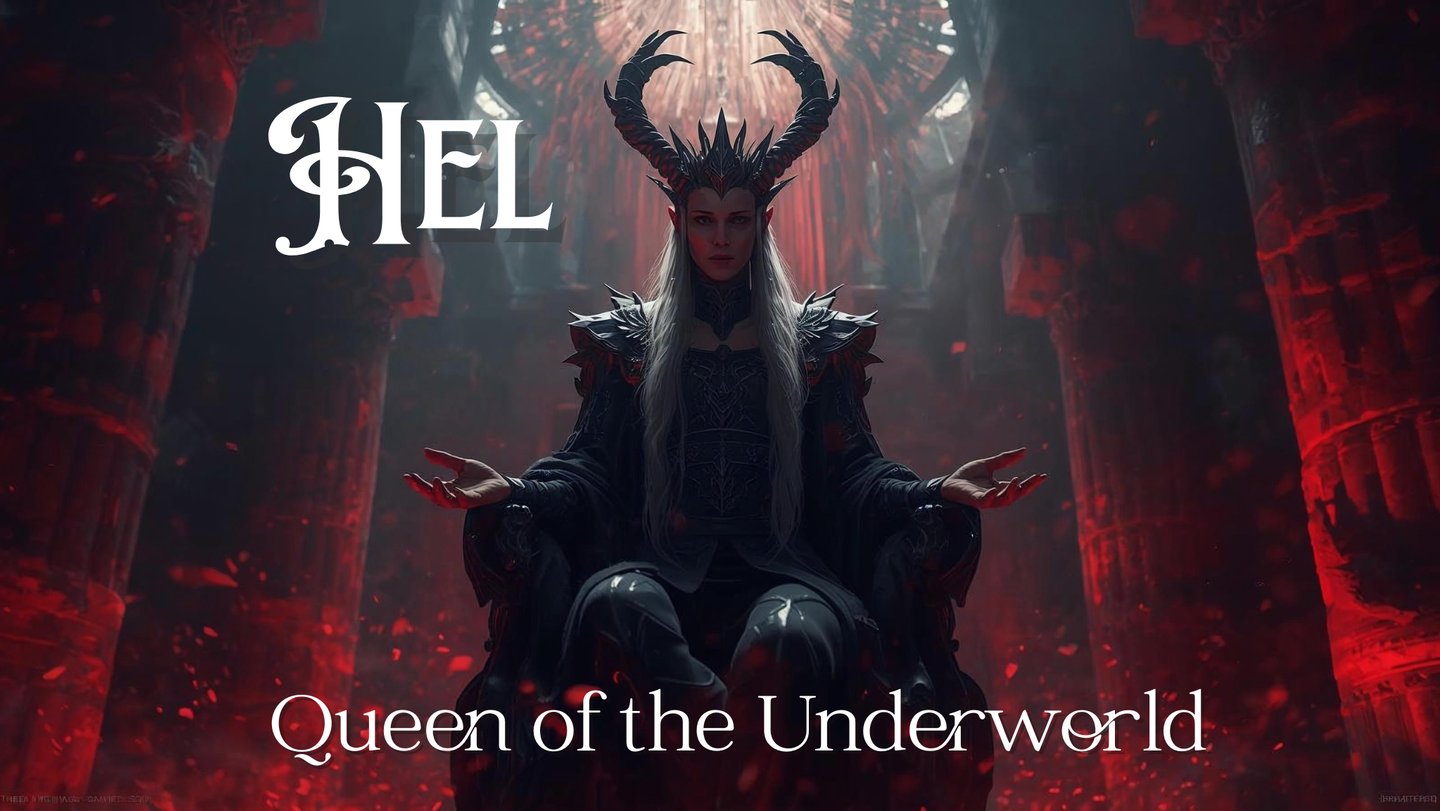Who Is Hel?
Goddess of Death, Transformation, and the Hidden Realm
In the icy reaches of the north, where the roots of Yggdrasil twist into shadow and frost, there rules a goddess both feared and revered. Her face is half beautiful maiden, half decaying corpse, embodying the inescapable balance of life and death. She is Hel—the Norse goddess of the underworld, the keeper of those who die not in battle, but in the quiet ways of life.
Hel’s domain is not fiery torment, but a place of stillness and inevitability—a realm where souls journey when their stories on Midgard end. Her name may chill the tongue, yet her truth is far more profound: she is the reminder that death, like winter, is part of life’s sacred cycle.


Hel is the daughter of Loki, trickster god, and Angrboda, a giantess of shadow and prophecy. Born among monstrous siblings—the wolf Fenrir and the serpent Jörmungandr—Hel’s fate was entwined with endings from the start.
Odin, king of the Aesir, cast her into the underworld, fearing her power. Yet in doing so, he granted her sovereignty: Hel became queen of the realm beneath, ruling with unyielding presence.
She is both guardian and guide of the dead, offering solace to those who pass of age, illness, or other natural ends. Warriors may feast in Valhalla, but Hel tends the majority of souls with dignity, watching over the forgotten and the quiet.
Symbols and Sacred Energies
Half-Living, Half-Dead Face – Her dual nature of beauty and decay
Bones and Skulls – Symbols of mortality and hidden wisdom
The Hel-Apple – Food for the dead, symbol of rebirth through endings
Black and White – Colors of balance, duality, and transformation
The Hearth Flame – Hel is not cruelty, but inevitability and stillness
Her power lies in acceptance. To walk with Hel is to face mortality with courage, to honor endings as gateways to renewal.
The Legend: Baldr’s Fate
The most well-known story of Hel comes from the tragic death of Baldr, the shining god of light and joy.
When Baldr was struck down by a mistletoe arrow, crafted by Loki’s cunning, his spirit fell into Hel’s realm. The gods, grief-stricken, begged Hel to release him, for his light was beloved across the worlds.
Hel agreed—but with a condition: every being in existence must weep for Baldr. And weep they did—all but one, a giantess (some say Loki in disguise) who refused to shed tears. Because of this, Baldr remained in Hel’s realm until Ragnarok, the world’s end.
This story reminds us that Hel does not bend the rules of fate. She is impartial, unwavering, and just. Her realm is not a punishment, but the natural order of all things.
A Whisper from Hel
“Do not fear me.
I am the hush between heartbeats,
The stillness between seasons.
I do not steal—I keep.
And in my keeping, all find rest.”
Final Thoughts
Hel is often misunderstood as cruel or grim, yet her truth is one of acceptance, transformation, and balance. She reminds us that endings are not punishments, but the natural pause before renewal. To honor Hel is to honor our ancestors, our mortality, and the cycles that make life precious.


